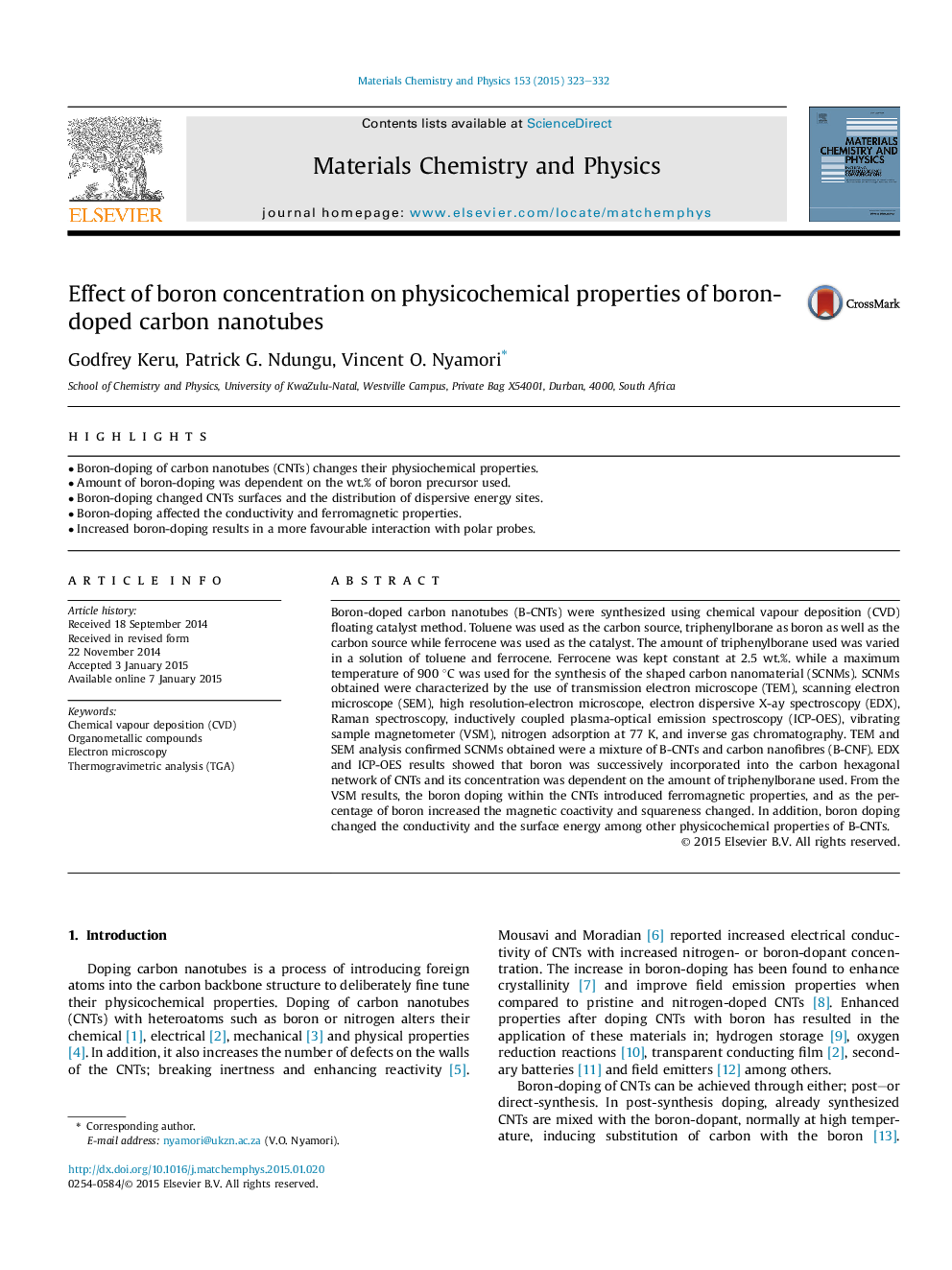| Article ID | Journal | Published Year | Pages | File Type |
|---|---|---|---|---|
| 1521575 | Materials Chemistry and Physics | 2015 | 10 Pages |
•Boron-doping of carbon nanotubes (CNTs) changes their physiochemical properties.•Amount of boron-doping was dependent on the wt.% of boron precursor used.•Boron-doping changed CNTs surfaces and the distribution of dispersive energy sites.•Boron-doping affected the conductivity and ferromagnetic properties.•Increased boron-doping results in a more favourable interaction with polar probes.
Boron-doped carbon nanotubes (B-CNTs) were synthesized using chemical vapour deposition (CVD) floating catalyst method. Toluene was used as the carbon source, triphenylborane as boron as well as the carbon source while ferrocene was used as the catalyst. The amount of triphenylborane used was varied in a solution of toluene and ferrocene. Ferrocene was kept constant at 2.5 wt.%. while a maximum temperature of 900 °C was used for the synthesis of the shaped carbon nanomaterial (SCNMs). SCNMs obtained were characterized by the use of transmission electron microscope (TEM), scanning electron microscope (SEM), high resolution-electron microscope, electron dispersive X-ay spectroscopy (EDX), Raman spectroscopy, inductively coupled plasma-optical emission spectroscopy (ICP-OES), vibrating sample magnetometer (VSM), nitrogen adsorption at 77 K, and inverse gas chromatography. TEM and SEM analysis confirmed SCNMs obtained were a mixture of B-CNTs and carbon nanofibres (B-CNF). EDX and ICP-OES results showed that boron was successively incorporated into the carbon hexagonal network of CNTs and its concentration was dependent on the amount of triphenylborane used. From the VSM results, the boron doping within the CNTs introduced ferromagnetic properties, and as the percentage of boron increased the magnetic coactivity and squareness changed. In addition, boron doping changed the conductivity and the surface energy among other physicochemical properties of B-CNTs.
